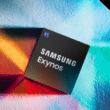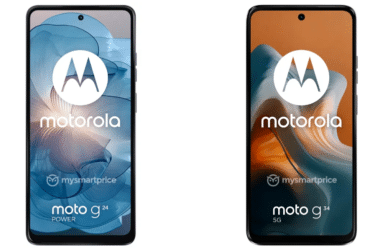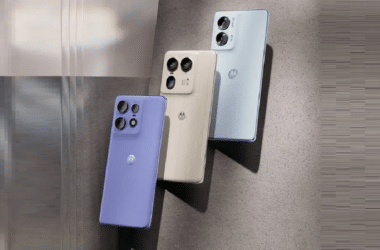Exploring Airtel’s Pioneering Move: Testing Ericsson’s RedCap Technology on Its 5G Network
In an exciting development, Bharti Airtel, one of India’s leading telecommunications giants, has taken a significant leap forward by becoming the first company in India to test Ericsson’s advanced RedCap technology on its 5G network. This innovative move, carried out in collaboration with Ericsson and Qualcomm Technologies, has the potential to revolutionize the 5G landscape in the country. In this article, we’ll delve deeper into the details of this groundbreaking endeavor, understanding what RedCap technology is, how it works, and the remarkable benefits it brings to the table.
The Journey Begins: Airtel Tests Ericsson’s RedCap Technology
Airtel’s pioneering spirit is evident in its partnership with Ericsson and Qualcomm Technologies for testing the Ericsson RedCap software on its 5G network. This monumental testing took place on a 5G TDD (Time Division Duplex) network, marking the initial use and confirmation of RedCap technology in India. This move has the potential to bring about a seismic shift in the world of 5G and IoT devices, particularly addressing concerns about battery life.
Unveiling Ericsson’s RedCap Technology
What is RedCap Technology?
Ericsson’s RedCap technology represents a cutting-edge innovation in the realm of 5G networks. It introduces new possibilities for utilizing 5G, making it more accessible to a wide range of devices, including smartwatches, wearables, sensors, and AR/VR gadgets. RedCap essentially fills the gaps left by the existing 5G standards, enhancing data speeds, response times, and network efficiency.
Key Features and Advantages of RedCap Technology
When compared to the LTE (Long-Term Evolution) device category 4, RedCap technology offers comparable data speeds but with several distinct advantages:
- Quick Response Times: RedCap ensures quicker response times, making it ideal for applications that require real-time data transmission.
- Efficiency: RedCap optimizes device efficiency, ensuring that devices perform better on the network.
- Enhanced Network Utilization: It effectively manages network resources, enhancing overall network performance.
- Improved Positioning: RedCap has the potential to support advanced 5G features, including enhanced positioning capabilities.
RedCap: A Game Changer for 5G Devices
One of the most exciting aspects of RedCap technology is its impact on 5G devices, particularly smartphones. With the RedCap 5G standard, users can harness the full power of 5G without fretting about their device’s battery life. This is a game-changer for users who have been apprehensive about adopting 5G technology due to concerns about battery drain.
RedCap technology, despite its simplicity, offers remarkable download speeds of up to 150Mbps, ensuring a seamless and speedy browsing experience. Additionally, it contributes to the miniaturization and cost reduction of 5G devices. This not only benefits individual users but also paves the way for a more affordable and accessible range of 5G devices.
Empowering Various Sectors
The implications of RedCap technology extend far beyond individual users. It simplifies and makes devices like smartwatches and industrial sensors more affordable, enhancing their utility in various sectors. Here’s how RedCap technology can empower different domains:
- Wearables and Augmented Reality: RedCap technology enhances the performance of wearables and AR devices, making them more responsive and efficient.
- Industrial Applications: In industries, RedCap can facilitate tasks like video monitoring and inventory management, thereby boosting operational efficiency and cost savings.
- Airtel’s Advantages: Bharti Airtel, the torchbearer of this innovation, stands to benefit significantly. RedCap technology can help Airtel streamline its operations and reduce costs, particularly as it moves towards Industry 4.0 with 5G networks.
In conclusion, Airtel’s collaboration with Ericsson and Qualcomm Technologies to test RedCap technology on its 5G network represents a remarkable milestone in the Indian telecommunications landscape. This innovative technology promises to make 5G more accessible and user-friendly while empowering various sectors with enhanced connectivity and cost-efficiency.
FAQs
What makes RedCap technology different from traditional 5G standards?
RedCap technology enhances 5G by offering quick response times, better device efficiency, and improved network resource management, making it more versatile and efficient than traditional 5G standards.
How will RedCap technology benefit smartphone users?
With RedCap’s 5G standard, smartphone users can enjoy 5G speeds without worrying about their battery life, providing a seamless and fast browsing experience.
What are the potential applications of RedCap technology in industries?
RedCap technology can be used in industries for tasks like video monitoring and inventory management, helping companies improve efficiency and reduce operational costs.
How does RedCap technology contribute to making 5G devices more affordable?
RedCap technology simplifies 5G devices, making them smaller and more cost-effective, thus broadening their accessibility to a wider range of users.
What advantages does Airtel gain from testing RedCap technology?
Airtel can benefit from RedCap technology by optimizing its operations, reducing costs, and enhancing efficiency, particularly as it moves towards Industry 4.0 with 5G networks.












